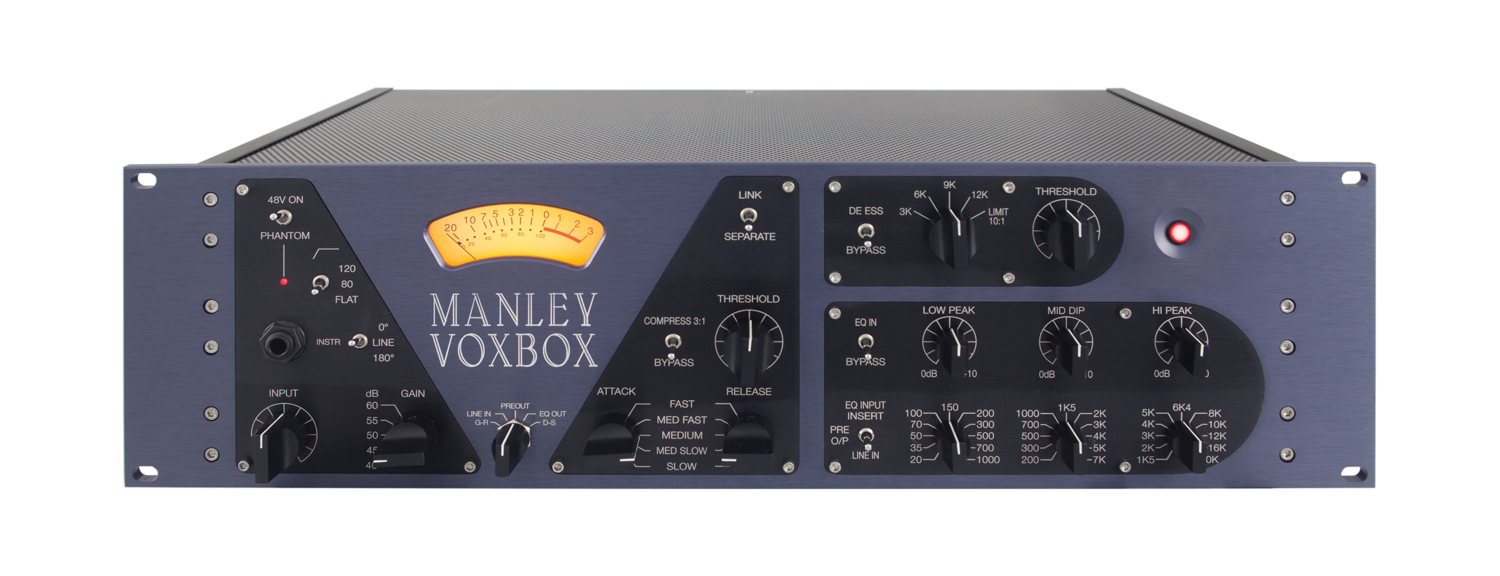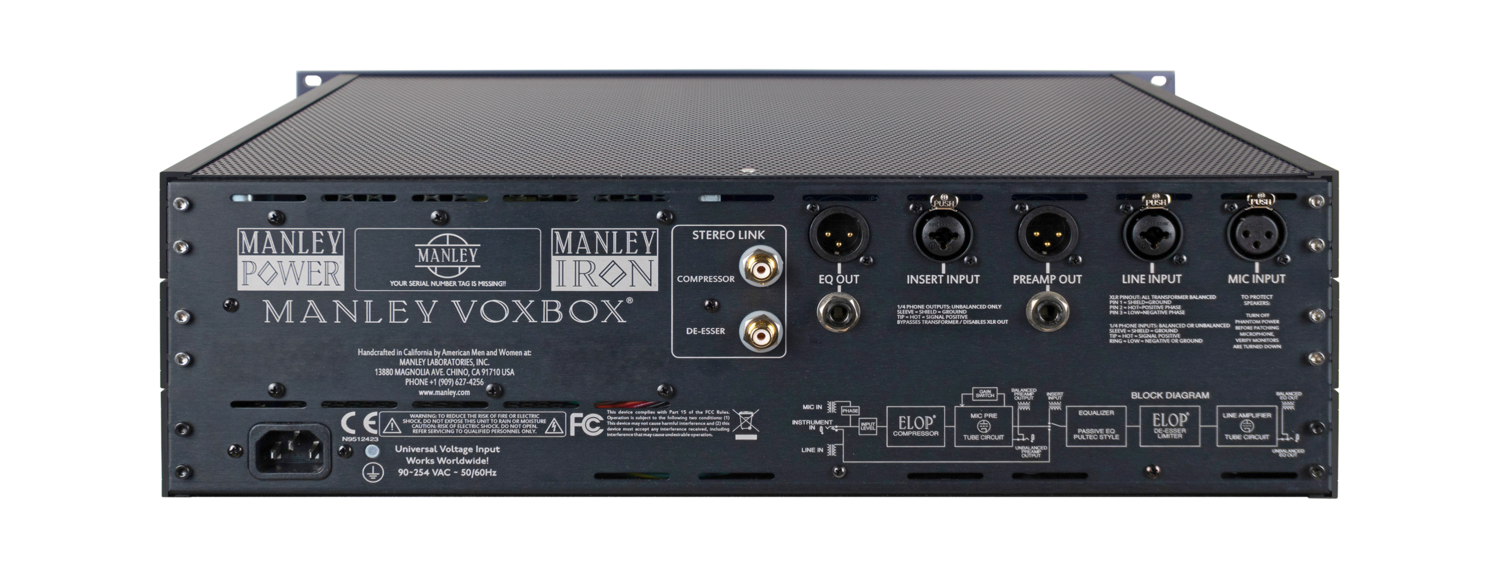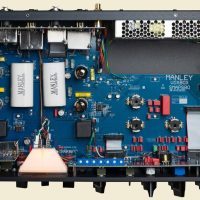Manley VOXBOX
Channel Strip met klasse A microfoon voorversterker, Pultec-stijl equalizer, optische compressor, de-esser/limiter en schakelbare VU-meter
Vragen? Betere prijs gezien?
Bel 0512 - 340457 of neem contact op!
Product omschrijving
VOXBOX®
REFERENCE CHANNEL STRIP
The VOXBOX® combines the legendary Manley Mono Mic Preamp, the ELOP reborn as a lower ratio compressor, the MID EQ blown out as a full range PEAK-DIP-PEAK EQ, and a DeEsser with a second ELOP limiter at the end. Using the Direct Input, bass players often wonder why it wasn’t named the BASSBOX.
IT LOOKS AWESOME, BUT WHAT IS IT?
Primarily, it is a voice processor which in itself is not a novel idea, but the time had come to pull out all the stops and make a truly professional high-end statement. One that covered the needs of the project songwriters and big-time major studios alike. One whose all-tube signal path could bring every instrument and overdub to life. One that, plain and simple, sounded unquestionably better than the rest, provided flexibility, simplicity, and well thought-out ergonomics. Full of features, timeless style, robust build quality, and that world-famous "Manley Sound", we present to you the MANLEY VOXBOX®.
THAT'S NICE. WHAT'S IT GOOD FOR?
While we were designing the VOXBOX® we couldn't help but notice how well it works on other instruments besides voice. There are some great settings for drums, bass, guitar, and keys and the two separate sections can be used together or independently. Stereo using two VOXBOXes? You know we couldn't resist planning for that as well. There are Stereo Links for both the compressor and the De-Ess/Limiter sections, special compression settings and super-sweet EQ frequencies for your mix or pre-mastering. So don't just use it for voice. The name "VOXBOX®" represents only the beginning...
SPECIFICATIONS
MIC PREAMP SECTION
- Maximum Output (1 kHz sine, 1.5% THD+N, BW 22Hz - 22kHz): +30 dBu
- Headroom (referenced to +4 dBu): 26 dB
- THD+N (1 kHz sine, +4 dBu): 0.008% (A-Weighted)
- Frequency Response +/- 1 dB: 10 Hz to 85 kHz
- Noise Floor (settings to minimum): -83 dBu (A-Weighted)
- Dynamic Range: 113 dB
- Maximum input level: +20.4 dBu (mic), +22 dBu (line)
- Input Impedance: MIC: 2000 Ohms; LINE: 4000 Ohms; INST: 100kOhms
- Maximum Gain: MIC: 60 dB; LINE: 23.2 dB; INST: 23.4 dB
- Maximum Compression/Limiting: 16 dB (Comp); 32 dB (Limit)
- Maximum Limiting with +4 dBu 1 kHz sine: 8 dB (Comp); 5 dB (Limit)
- Attack Times: 4 mS - 70 mS (Comp); 2 mS (Limit)
- Release Times: .3, .5, 1, 2, 5 Sec (Comp); .5 Sec (Limit)
- Compress / Limit Ratios: 3:1 (Comp); 10:1 (Limit)
EQ SECTION
- Maximum Output (1 kHz sine, 1.5% THD+N, BW 22Hz - 22kHz): +33 dBu
- Headroom (referenced to +4 dBu): 29 dB
- THD+N (1 kHz sine, +4 dBu): .009% (A-Weighted)
- Frequency Response +/- 1 dB: 10 Hz to 68 kHz
- Noise Floor (settings to minimum): -78 dBu (A-Weighted)
- Dynamic Range: 111 dB
- Maximum input level: +22.8 dBu
- Input Impedance: 3000 Ohms
- Maximum Gain (INSERT): 0 dB / Unity (internal trim: -4.7 to +7.7 dB)
GENERAL INFO
- Mains Voltage & Frequency: Internal Universal Power Supply 90-254 VAC / 50~60Hz
- Power Consumption: (0.28A @120VAC) 31 Watts (34 VA)
- Size (3U): 19” x 5.25” x 10”
- Actual Weight: 14.5 lbs.
- Domestic Shipping Weight: 23” x 15” x 10”, 25 lbs
- International Shipping Weight: 23” x 15” x 11”, 28 lbs

 Product is toegevoegd aan uw winkelwagen
Product is toegevoegd aan uw winkelwagen




